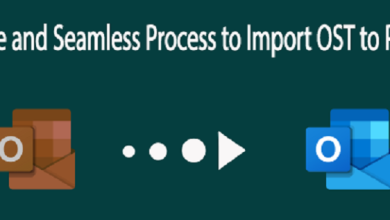IPO Allotment: Understanding its fundamentals and application process

Initial Public Offerings, abbreviated as IPOs, is a process by which a company sells stock to the broader populace. The company receives funds from investors, which gets used to help the business grow and expand. The investor gets shares in the same company and might even profit, depending on the company’s success.
The overall IPO process begins when an organisation decides to sell their stock to the public. They can issue an IPO even if they do not require the funds, but they usually raise capital for expansion or other projects. The IPO process takes months to begin, and numerous steps are involved. One such step in this process is IPO allotment. This article teaches investors more about upcoming allotments and checks the status of forthcoming ones.
Whilst the government makes it easier to invest in IPOs by lowering the subscription size, it has also made it easy for investors to recover their money.
Fundamentals of IPO Allotment Process
- The IPO issuing company distributes documents for the suggested and most recent IPO.
- The IPO issuing company may offer more or fewer shares than it had planned based on the number of proposals submitted during the book-building period. If there is not enough interest, they may even cancel the IPO. Insurance companies, for instance, may cancel an IPO if not enough applications are received to cover their initial fundraising goal.
- These documents are only available for a limited time for prospective investors to review. This is called the ‘book-building’ period.
- Whenever the book-building phase ends, the process moves on to the next stage called ‘trading.’ Here, investors can buy and sell shares whenever they can through their broker at whatever price they decide to provide them at the time.
- Once all of this completes, the IPO issuing company announces how many shares they will sell following the IPO listing and which brokerage houses (if any) will get authorised to sell them at that time. Subscribing to the IPO list at this point is too late. The investors must wait for it to occur.
How to check the IPO allotment status?
Investors can check IPO allotment status online by entering the following details on the official NSDL website:
- PAN card number
- Name
- Permanent residential address
- Email address
- Mobile number
Investors need to enter their shares investment details, such as the number of shares they wish to purchase and a bid price for these shares. They also need to ensure that they have selected a valid bid price for the system to consider their application. If an investor has sufficient funds in their Bank Account but does not know how much quota they have got allotted, they can still proceed with the purchase if they enter a bid price for the same.
Based on the information provided, it may take a day or two before the system allocates the shares to their account.
What are the various aspects of the IPO application forms?
Agent Information
This form must be completed by the broker or any other person who wishes to join the Depository Participant. The applicant needs to enter personal information. This section requires two addresses: communication from the exchange and the IPO company.
Customer Information
The customer must fill out this form with their name, address, age, and nationality. If the customer is a company, its name, address, CIN number, and PAN number is included.
Form for Allotment
Investors must provide their information here, including their name, gender, father’s name, and date of birth. Along with this, investors also need to mention their current residential address, permanent address, and contact information.
How does the IPO allotment process happen?
Before shareholders even consider investing in an IPO, they must have the following:
- Demat Account (necessary for buying shares).
- Trading Account (required if the investors intend to sell shares).
- Amount in Demat Account that corresponds to their bid.
If the investors have all the prerequisites, they can start the application process. It is a simple procedure that is as follows:
Step 1: Start the application
This gets done online and offline, and the account must have enough funds to cover the investors’ bid. Since market regulators have made the ‘blocked amount facility’ mandatory for IPOs, their bid is unlikely to be considered if it lacks it.
Step 2: Allocation
This takes place in an organisation. The allocation gets affected by the number of bids and the validity of the bids submitted. You need to know that not all applicants receive what they have requested because demand outstrips supply by a wide margin.
Step 3: Obtaining approval
The registrar of the IPO completes and affirms allotment of the successful bidders in about seven days. The registrar’s website is best for checking the IPO status of the allotment. It is also possible to check it on the National Stock Exchange or the Bombay Stock Exchange websites. Investors need the PAN and DP ID/Client ID number or the bid application number for the IPO allotment status.
The IPO status indicates the level of trust that the company has earned in the Stock Market. In recent years, an IPO has become an enormous event that garners significant media coverage and interest from both retail investors and large financial institutions looking to buck the trend. After the allotment procedure completes, the shares get listed on the exchange within days, allowing them to get traded.
You must open a Demat Account for this entire process. It helps to keep IPO Investments in a dematerialised format. This makes it easy for investors to access their investment or check their IPO allocation status.
Keywords: IPO allotment status, IPO status, IPO allotment, open Demat Account





